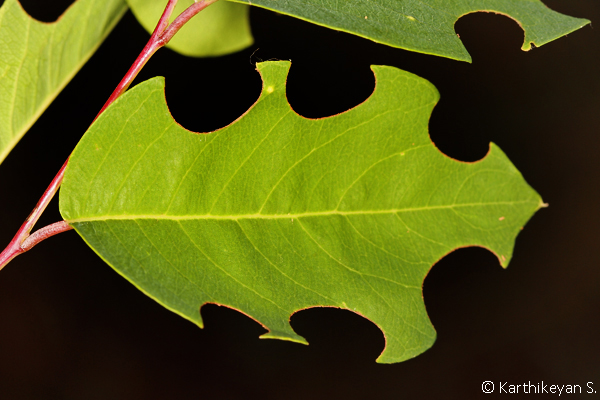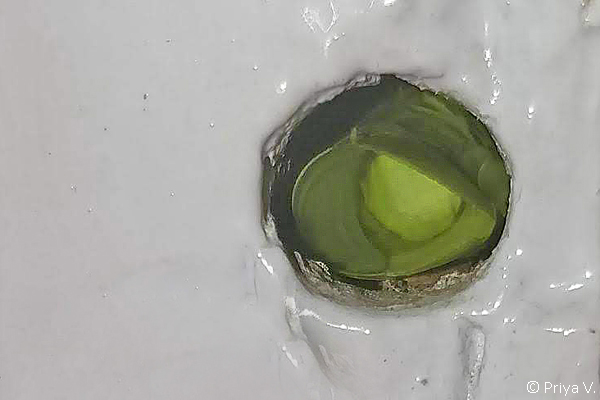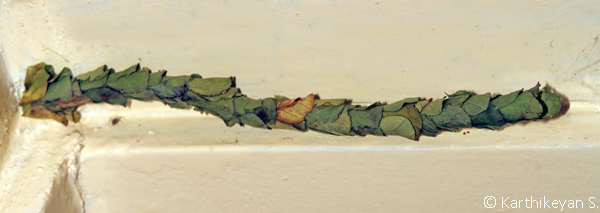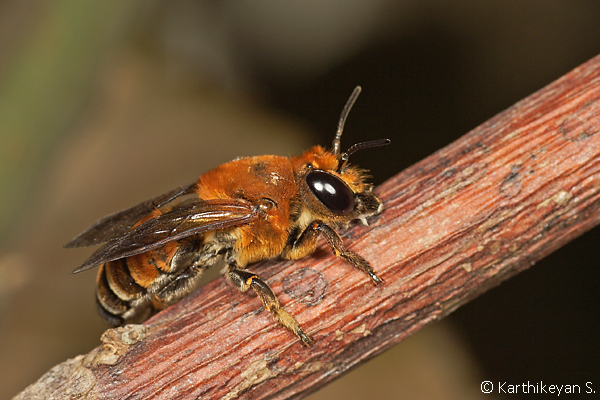Recently, while standing on the 17th floor of an apartment and catching up with friends, I noticed a little green leaf fly towards me! This caught my attention. It didn’t seem like it was blown by the breeze, for there was not much of it. The reason that caused the leaf to ‘fly’ towards me was not apparent until it flew in just a few feet below us and disappeared. I kept an eye on the same spot only to see something else fly away – a leaf-cutter bee!
The tallest tree in the immediate vicinity was not more than 20 feet – this meant that the bee carried a section of the leaf all the way up over a 100 ft! Or perhaps, there were plants in one of the lower floors of the apartment that the bee was capitalising on. Still, to be able to fly all the way up with a load must be quite an energy consuming task for the bee.
This event took me down memory lane – some three and half decades ago – into the early 1980s. We had recently moved into our own home that was situated in the midst of a lot of open space overgrown with weeds and the like. The wooden doors inside the house had typical bolt holes that were prevalent in those days. These enabled you to close the door behind you and lock it if you may so wish.
It was in these settings, that I saw my first leaf-cutter bee. I noticed the little bee bring in a leaf and disappear into the bolt hole in the wooden door frame and fly out without it after a brief minute spent within. This happened several times – leaf after leaf – until such time that there was not much space left in the bolt hole to accommodate any more. Having covered the opening with a leaf the bee ceased to make further trips. It was made clear that no one was to close that door until further instructions!
I kept a tab on the bolt hole for many days. But Nature has its ways. One evening when I returned home, I noticed that the leaf that covered the entrance was gone and some bits of dry leaves were strewn on the floor. A few days later, I cleared all the dry leaves so as to enable us to bolt the door.
To begin with, the ability of the little bee to cut leaves so neatly is amazing in itself. And, watching the bee do so with its mandibles, ensuring that the leaf does not fall to the ground can leave you awestruck. Am sure many of us may have seen such cuts in the leaves and perhaps wondered as to what may have caused such a neat tear in the leaf. Now we know!

A typical example of how leafcutter bees cut leaf for their nests.
These bees, upon finding a suitable cavity, set to work. They begin by cutting leaves and carrying them under their abdomen to the selected nest spot. The leaves are used to build their nests. A nest typically consists of several cells; each separated by a leaf wall.

The leaf nest inside a bolt hole showing the cell wall.
Eventually when the bee has completed building the nest, it looks like a badly made leafy cigar. In the past, I have seen pictures of what this leaf stack looks like. But it was only recently that my colleagues at one of the camps pointed out to something they thought would interest me. Perhaps they found it during their routine house-keeping efforts. What they had found was interesting indeed but how they had managed to handle it carefully and not letting it fall apart came as a surprise! And, as it should be expected, pictures were taken of the long slender cigar -like leaf stack.

The length of the nest usually is determined by the depth of the cavity used for nesting. Here is a the entire nest showing how the cut leaves are neatly stacked. possibly built in the fold of a curtain or some similar situation.
So the entire length of the cigar-like structure would contain several cells and each cell would have an egg. Each leafy cell itself is provisioned with pollen for the young. This parental behaviour stops here. There is no further interaction between the mother bee and the off springs. Upon hatching, the larvae feed on the food, moult a few times as they grow and pupate within the cell itself. Only the adults emerge from the nest. Quite amazing isn’t it?

An adult leafcutter bee roosting.
As we have seen, leafcutter bees use already existing cavities to lay their eggs. They are not known to make holes for the purpose or damage things in the process. So let’s welcome them into our living spaces.
I know what is going on in your mind – Why would I want to put up with bees? – They sting! Well, typically these are gentle creatures and are not known to sting. Besides, they are solitary insects. Leaf-cutter bees also have an important role to play in the scheme of things. They are known to be very good and efficient pollinators – all the more reason to encourage them in our midst.
The family Megachilidae is very diverse. There are about 4000 species world over with varied behaviours. Based on this, they are differently called as the mason bees, carder bees and leafcutter bees. In fact, the largest bee in the world – the Wallace’s Giant bee with a wingspan of about 2.5 inches belongs to this family!
All these attributes of the leaf cutter bees make them just the right candidates for us to – to say the least – let them be! Not just that. You could also do little things to attract them. And when you spot one around, make sure you take some time to watch and observe. A little patience can give you hours of unparalleled joy!